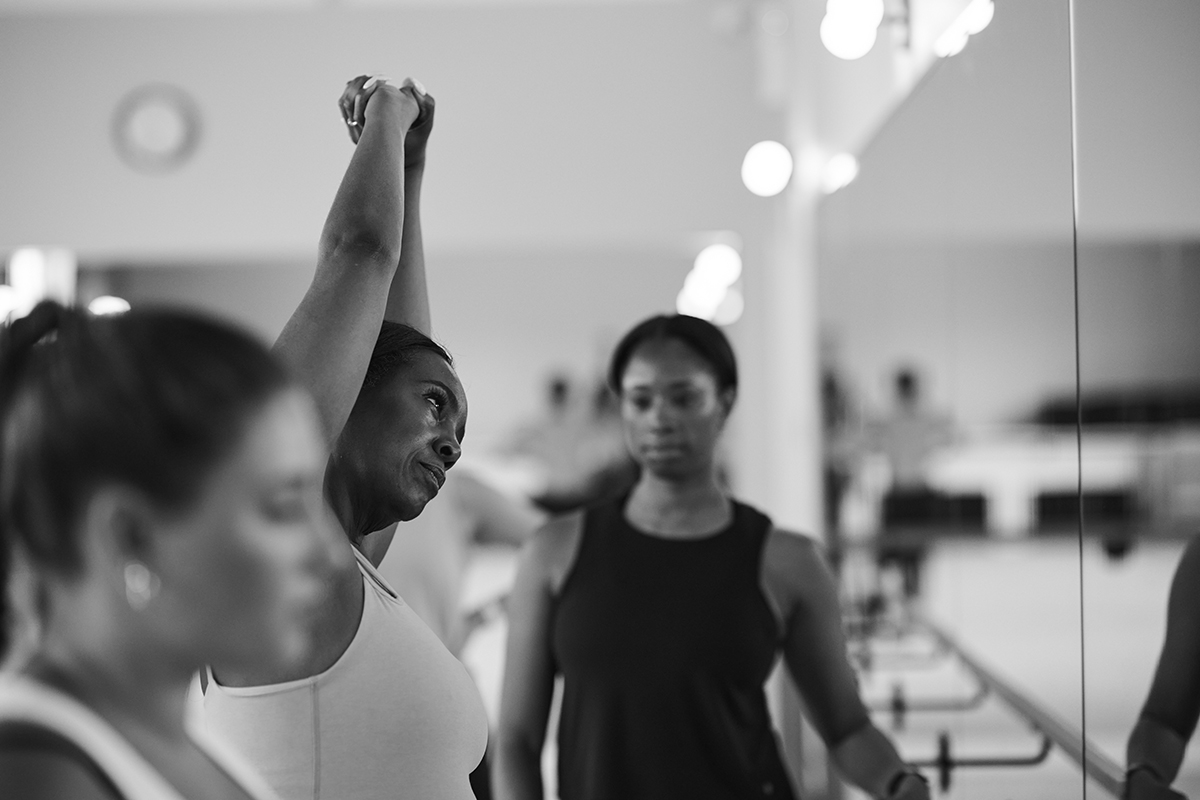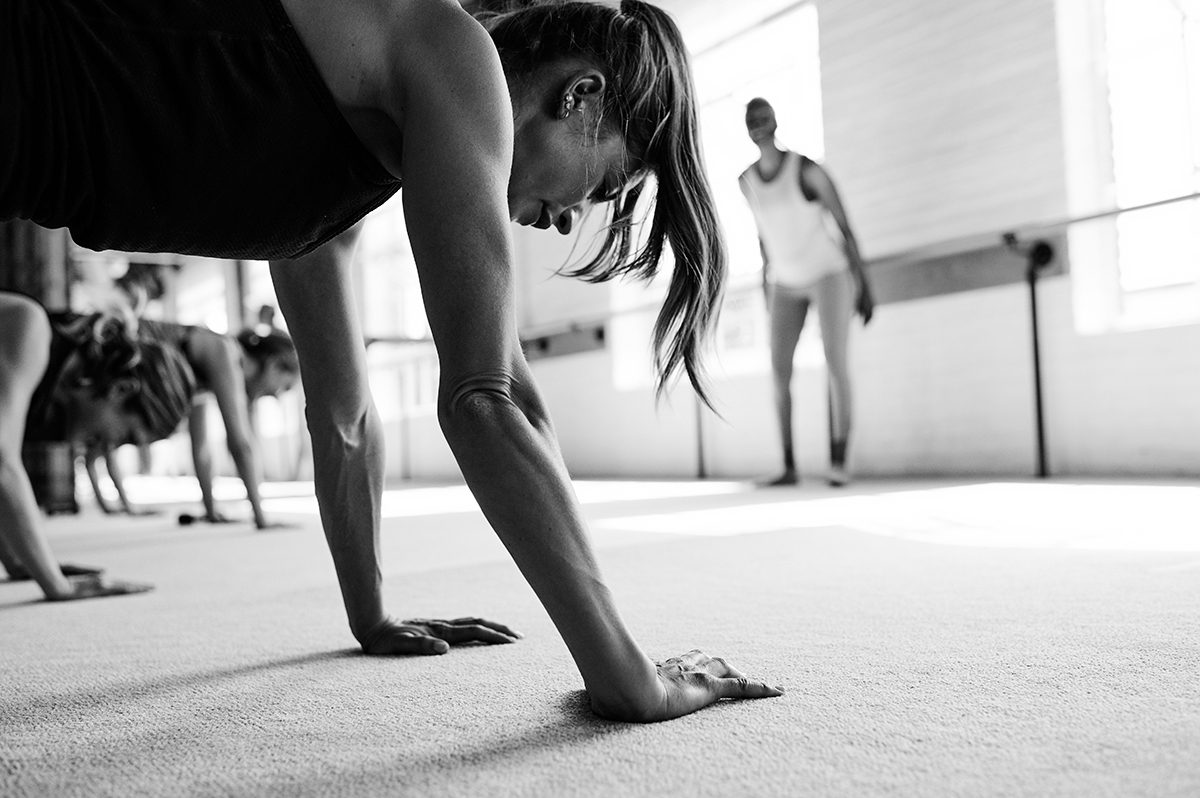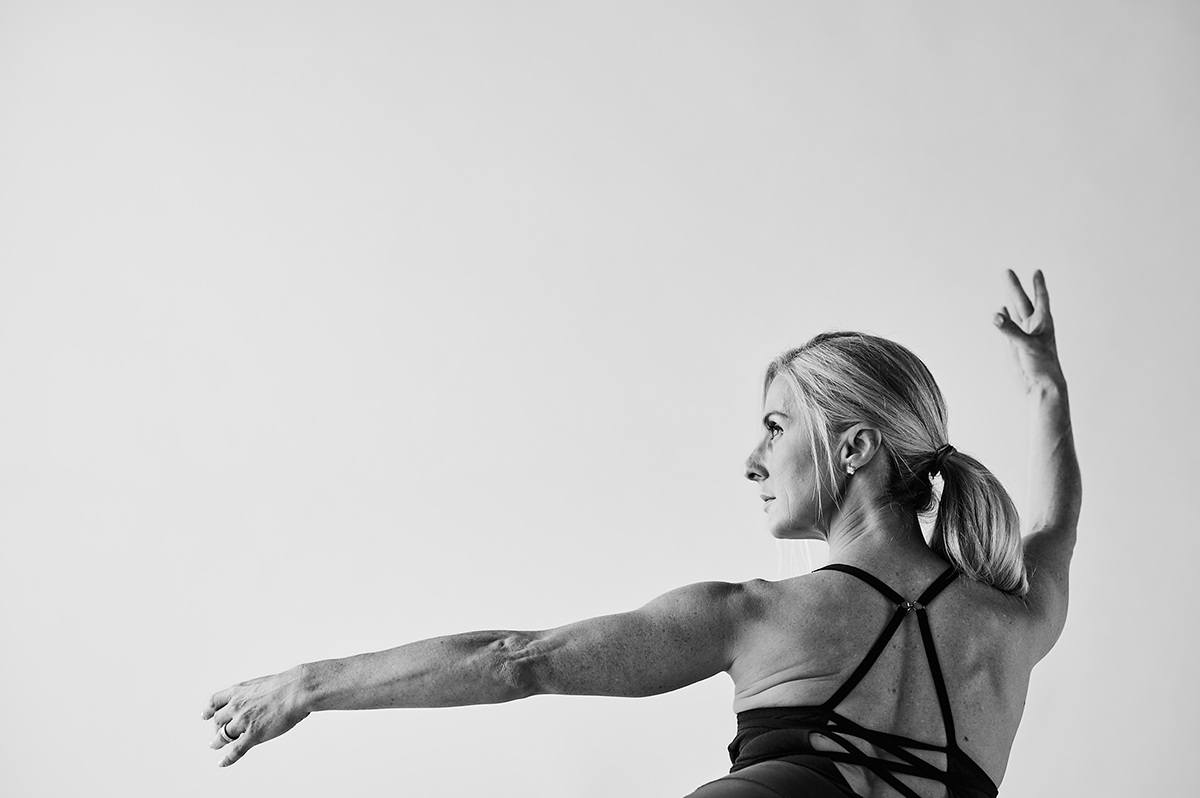New clients! For a limited time, Get 13 Classes for $78 (only $6 per class)
The Bar Method Class Flow

The term “barre class” may call to mind any number of visuals from an impossibly high kick to a swan-like stretch at a ballet barre. While a typical Bar Method class is inspired by the grace and poise you might encounter in a traditional ballet class, the actual workout is designed for anyone – students of all levels and abilities. The signature technique that defines a Bar Method class is designed to deliver fast results to reshape the entire body in the safest and most efficient way possible.
The Class Flow
As a new student of The Bar Method, I sensed there was a flow to class, but it wasn’t until I took several classes that I could anticipate what exercise came next in class. Once I did, I found comfort in the predictability of that flow, or order of exercises. Now that I’m a Bar Method Instructor, I have a deeper understanding of the importance of the class flow that creates the safe, challenging and graceful workout for which The Bar Method is known. That’s not to say that every class is the same, however there’s a consistent format you can expect a Bar Method class will follow designed to work muscles in the right order to create sculpted arms, flat abs, a lifted seat, elongated thighs and improved posture and alignment.
The Bar Method pairs precise isometric movements that deeply challenge the targeted muscle to fatigue with active and passive stretching which lengthens and elongates the muscle just worked. Thus, the class creates a dance-like flow alternating between periods of work and stretching. This, combined with a fast paced class, spikes the heart rate in intervals to deliver an intense calorie burn both during class and long after it’s over.
Like most workouts, every Bar Method class starts with a warm-up. Ours includes push-ups and upper-body work using light free weights to target the shoulders, lats, biceps, upper back and postural muscles.
After the warm-up, students head to the barre for leg and seat work. Leg work targets the inner and outer thighs and the quads while seat work benefits all three muscles of the glutes and the hamstrings. From this point on, the method relies mostly on bodyweight and a few props (mats and balls) to challenge the muscles.
Following leg and seat work, students move to the floor and work under the bar for two more exercises – Round Back and Flat Back. Round Back elongates and strengthens the hamstrings, glutes and quads, stretches the lower back muscles and engages the abdominals. Flat Back is an intense calorie-burner that engages the deepest layer of abdominal muscles. It’s strategically placed in class so that students maximize fat-burn as they reach into their fat stores for energy.
Finally, class concludes with core work on the floor and a final blast to your glutes and hamstrings with Back-Dancing.
Keeping it Fresh
It may seem that if class follows a basic flow that the format would get stale or students would get bored, but nothing could be further from the truth! Extensive training ensures teachers are masterful at challenging students with creative choreography, thoughtful class design and endless exercise variations. Moreover, different days have a different muscle focus so you may work some muscles more than others depending on the day. The more often you come, the more well-rounded workout you’ll get. Classes are taught in time with upbeat music and props like mats and balls offer even more variety. Every class keeps students focused by emphasizing form and offering verbal and hands-on adjustments.
As a writer who is also a Bar Method Instructor, I like to think of each class I design as a story which moves from beginning to end with a distinct theme and weaves similar choreographic elements throughout, sometimes with a surprise plot twist or two – like a zinger! I enjoy challenging my students to exceed their full potential and leave class feeling stronger than when they arrived or even to surprise themselves by doing something they didn’t think they could. The Bar Method results extend far beyond physical transformation, which makes the workout so special.
Making it Personal & Safe
One of the ways The Bar Method is most unique is that the class flow and exercises have been perfected for decades with the guidance of physical therapists. This makes the workout safe and effective for students of all levels and abilities, including those with physical limitations and injuries. At The Bar Method, students have freedom to work within their own personal limitations while feeling supported and challenged in the classroom. Many students thrive from the personalized adjustments and modifications they receive to make the workout work for them.
Which Class is Right for You?
The Bar Method offers a variety of class types and formats to suit your needs. The signature Bar Method class is a 60-minute fat-burning workout that follows the basic class flow outlined in this post. Similarly, the 60-minute Bar Strength class challenges more experienced Bar Method students with more thigh and seat work.
For cardio lovers, Bar Method Cardio relies on a faster pace to keep your heart rate high and a varied class flow to keep your muscles guessing. If you’re short on time, Bar Express is a condensed version of the signature class, which packs a full-body workout into a 45-minute class.
Next time you’re in class, think about the sequence of exercises and their strategic placement. This will help keep you focused and motivated on the muscles you’re working during your workout, enhance that feeling of accomplishment, strength and confidence you feel post-class and keep you coming back for more day after day, week after week and year after year. Happy shaking!

About the Author
Marissa Vicario McFarland is a Certified Integrative Nutrition Health Coach and Bar Method Instructor.



